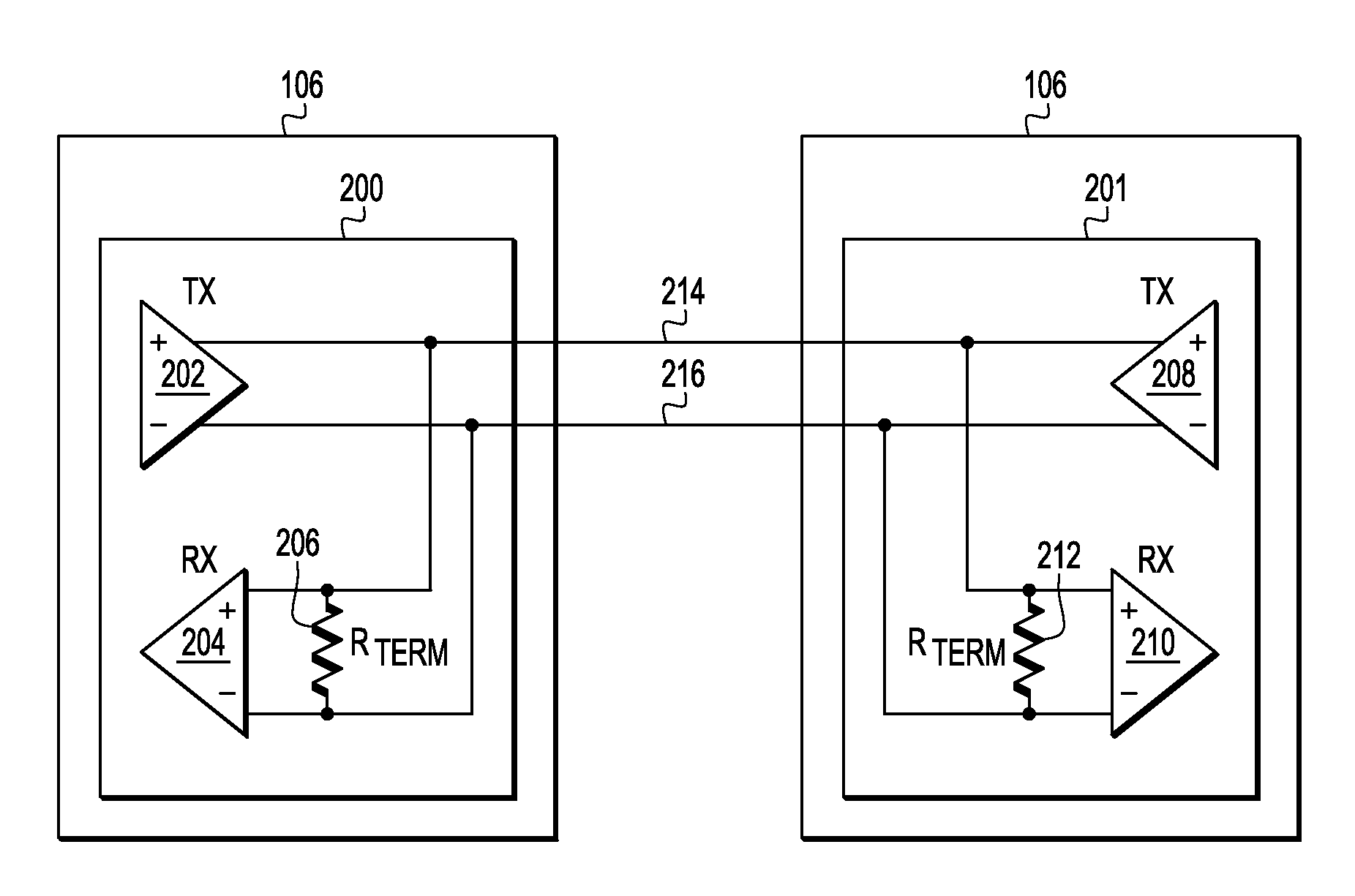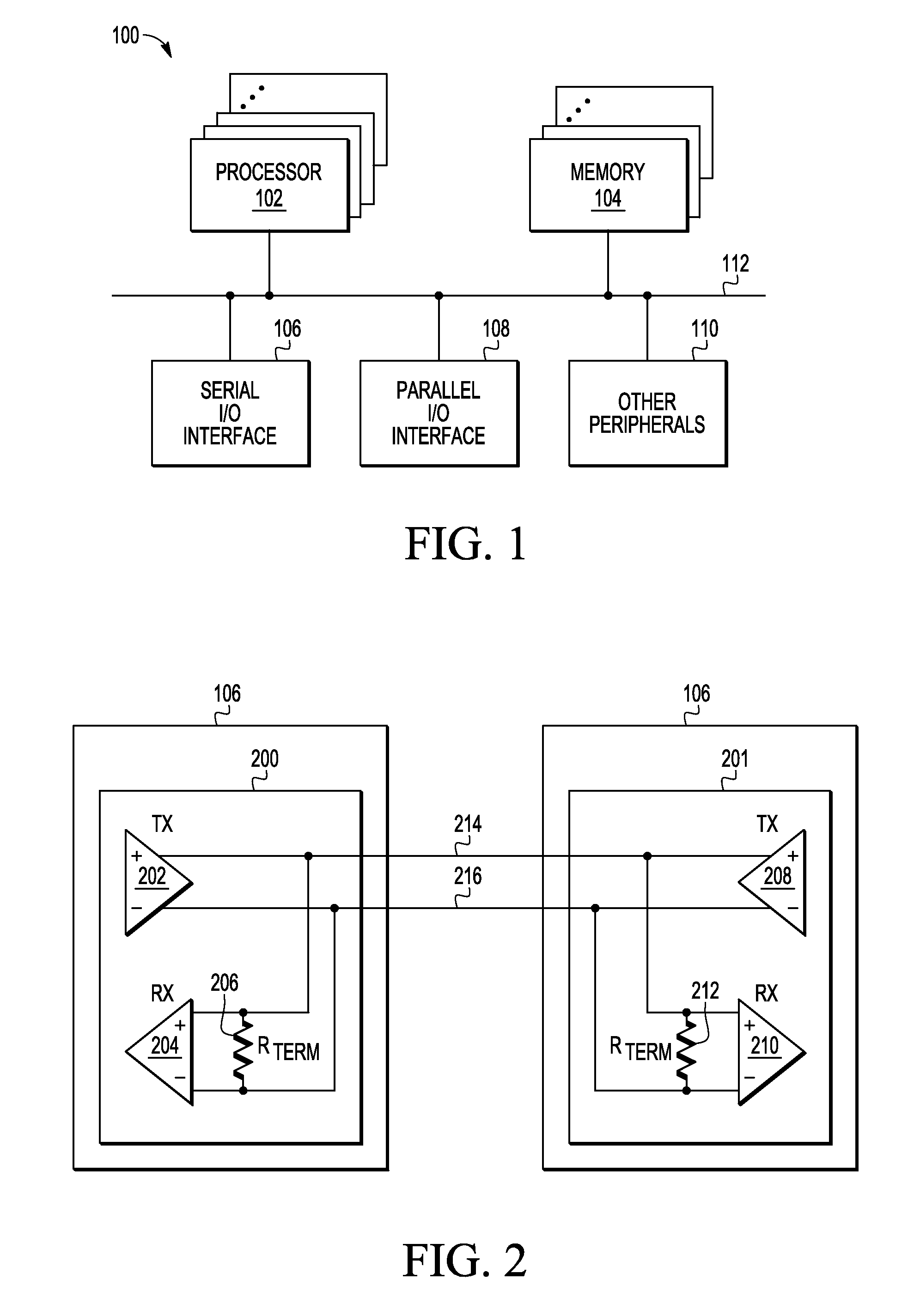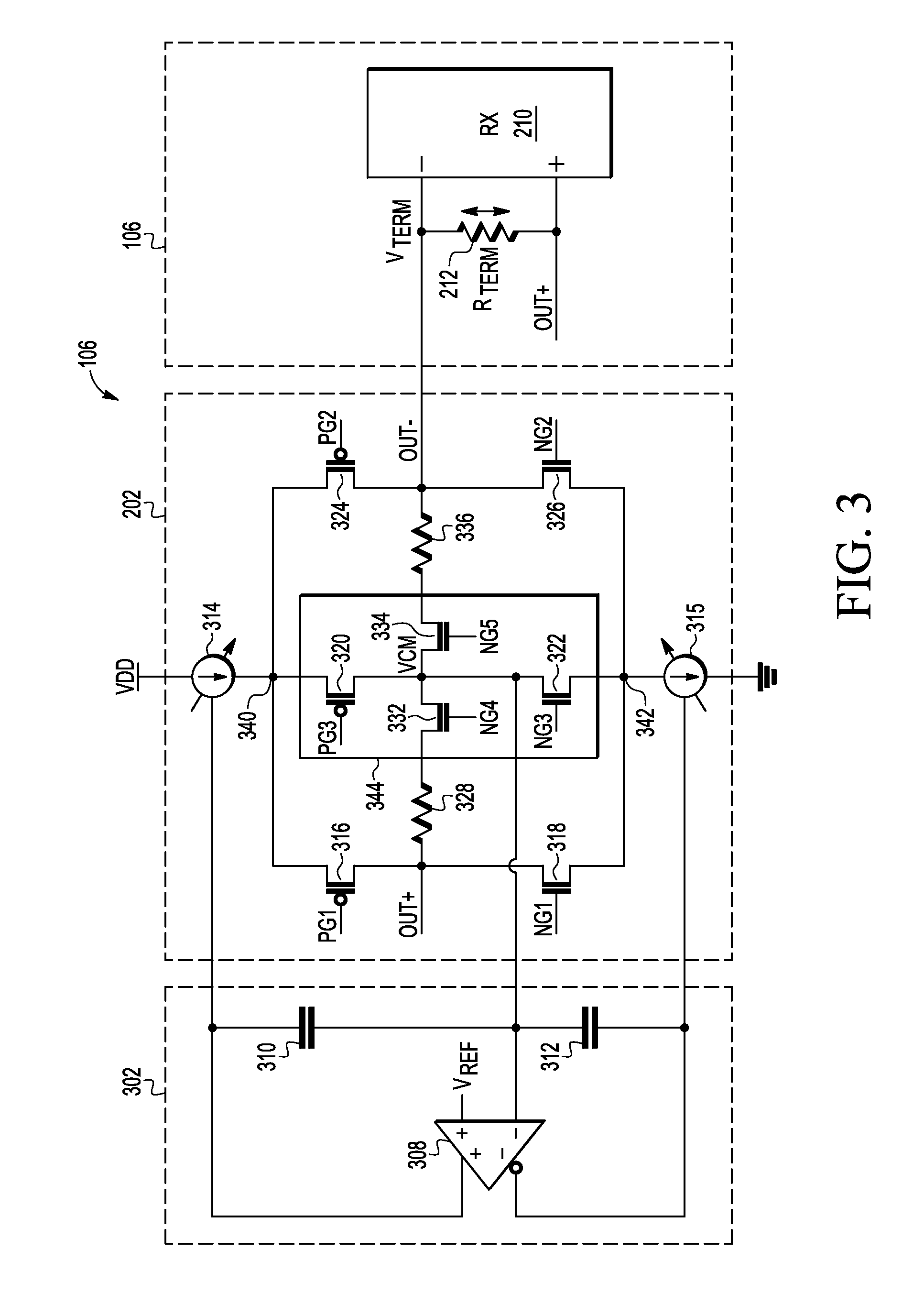Lvds with idle state
a technology of idle state and lvd, which is applied in the direction of pulse generator, logic circuit coupling/interface arrangement, pulse technique, etc., can solve the problem of indeterminate output of common mode feedback amplifier
- Summary
- Abstract
- Description
- Claims
- Application Information
AI Technical Summary
Benefits of technology
Problems solved by technology
Method used
Image
Examples
Embodiment Construction
[0010]Embodiments of systems, devices and methods are disclosed for a low voltage signaling (LVDS) transmitter with a standby or idle current path in the output switching stage of the LVDS circuit. When common lines are used to transmit and receive data between devices, the transmitter does not need to be fully shut down during receive mode, but rather can enter the idle or standby mode. The standby current path maintains voltage at a common mode feedback amplifier during the idle mode, and allows the current sources and feedback amplifier to operate normally while being isolated from the data path of the transmitter. The standby current path further allows the output to be in a high impedance state for receiver functionality. Maintaining the transmitter in standby mode during receiver operation sharply reduces startup delay of the transmitter when switching back to transmit mode. For example, by allowing the transmitter to remain in standby mode, the time required to switch from re...
PUM
 Login to View More
Login to View More Abstract
Description
Claims
Application Information
 Login to View More
Login to View More - R&D
- Intellectual Property
- Life Sciences
- Materials
- Tech Scout
- Unparalleled Data Quality
- Higher Quality Content
- 60% Fewer Hallucinations
Browse by: Latest US Patents, China's latest patents, Technical Efficacy Thesaurus, Application Domain, Technology Topic, Popular Technical Reports.
© 2025 PatSnap. All rights reserved.Legal|Privacy policy|Modern Slavery Act Transparency Statement|Sitemap|About US| Contact US: help@patsnap.com



